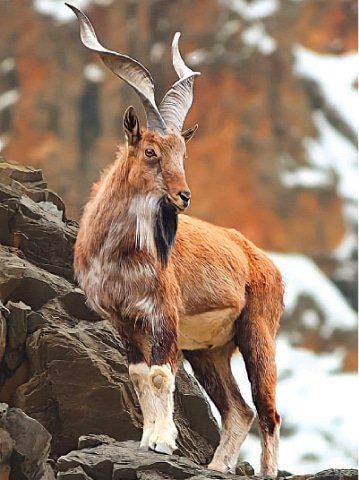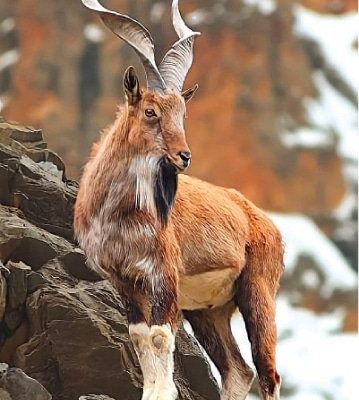
Let’s dive into the world of the markhor and understand its behavior. The markhor (Capra falconeri) is a fascinating animal that thrives in the mountainous regions of countries like Pakistan, Afghanistan, and Tajikistan. It’s a strong climber, known for its agility and unique adaptations to harsh terrains. But before jumping to conclusions about its potential danger to us, it’s crucial to explore how this species interacts with humans, its behavior patterns, and the circumstances under which it might exhibit aggression.
Understanding the Markhor’s Behavior
Markhors are mainly known for their herbivorous diet, grazing on grasses, shrubs, and leaves. As prey animals, they have developed an instinct to avoid predators, which primarily include big cats and humans. They possess excellent vision and agility, allowing them to navigate rocky environments with ease.
Now, you might be curious about how they react to humans. Generally, markhors tend to be shy and cautious. If they sense a human approaching, they will often flee rather than confront. This flight response is typical among wild animals, as their priority is survival. So, in most cases, markhors are more likely to retreat than to become a threat.
However, if cornered or threatened, any wild animal can display defensive behavior. Here’s where understanding their behavior becomes vital. Markhors, with their strong build and large horns, could potentially become aggressive if they feel endangered. It’s essential to respect their space, as you would with any wild animal.
When Might a Markhor Act Defensively?
You might be wondering, under what circumstances would a markhor act defensively? The truth is, several factors can influence this behavior:
- Habituation to Humans: In areas where markhors have frequent encounters with people, they may become more tolerant, but this is not guaranteed. If they are approached too closely, they could react unpredictably.
- Protecting Offspring: Mother markhors are particularly protective of their young. If she perceives a threat to her kid, she may defend it aggressively.
- Injured or Cornered: A markhor that is injured or feels trapped may become more aggressive than usual. Like any wild creature, if it believes it has no escape, it may fight back.
It’s worth emphasizing that these scenarios are not common. Most encounters between humans and markhors end peacefully, as these animals prefer to avoid conflict.
Markhor Habitat and Human Interaction
Markhors inhabit steep, rugged terrains. This habitat choice plays a significant role in reducing the likelihood of human-animal conflict. They’re often found at high altitudes where humans are less likely to venture.
In regions where markhors coexist with local communities, people often have a mutually respectful understanding. For instance, in some areas of Pakistan, local hunters have established sustainable practices that help protect the markhor population while allowing limited hunting. This balance often fosters a sense of appreciation rather than fear.
However, as tourism increases in these regions, the risk of human encounters with markhors also rises. Tourists eager to photograph these magnificent animals must prioritize safety and respect their distance. It’s crucial to observe these creatures from afar to ensure both human safety and animal welfare.
Markhor Conservation Status and Protection
Interestingly, the markhor is classified as “Near Threatened” on the IUCN Red List. This brings us to a vital point: conservation efforts. Protecting markhors is essential not just for their survival but also for the delicate ecosystems they inhabit.
Efforts to conserve their population often include creating protected areas and implementing anti-poaching measures. Healthy markhor populations contribute to biodiversity and the overall health of their habitats.
You might find it fascinating that these conservation initiatives often involve local communities as key stakeholders. Educating people about the ecological importance of the markhor helps reduce fear and promotes coexistence, ensuring that both humans and wildlife can thrive together.
So, can the markhor be dangerous to humans? The short answer is: not really. While they have the potential to act defensively under certain conditions, markhors are largely non-aggressive and prefer to avoid conflict. By understanding their behavior and respecting their space, humans can coexist with these beautiful animals without fear.
In summary, markhors are a symbol of the wild, reminding us of the importance of preserving nature. The more we know about them, the better equipped we are to interact responsibly with wildlife. Whether you’re an outdoor enthusiast or simply curious about our natural world, embracing the mystery of the markhor can lead to a greater appreciation for the diverse wildlife we share this planet with.

